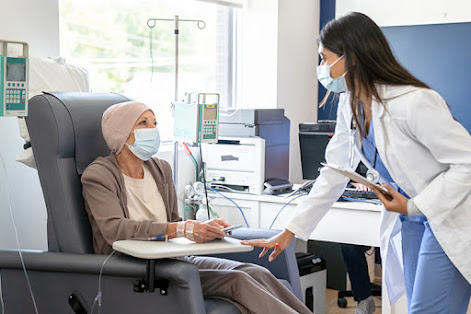Awareness can make all the difference regarding critical health topics like blood cancer and Acute Lymphoblastic Leukaemia (ALL). Blood cancer includes leukaemia, lymphoma, and myeloma. It affects blood, bone marrow, and the immune system. Abnormal cells disrupt normal blood function. Symptoms include fatigue, infections, and bruising. Treatment options depend on type, stage, and patient health. Early detection is crucial for better outcomes. Understanding the workflow from initial symptoms to final treatments can ease some anxiety associated with these medical terms. This detailed guide delves into what blood cancer and ALL are, how they're diagnosed, and what treatment options exist.
Acute Lymphoblastic Leukaemia (ALL) Unpacked
Acute Lymphoblastic Leukaemia (ALL) is a fast-growing blood cancer. It starts in the bone marrow, making too many abnormal white blood cells. Quick diagnosis and treatment are essential for a better chance at recovery. And if we talk about the Leukaemia treatment in India, it offers top-quality care at a reasonable cost. Leading hospitals provide advanced therapies like chemotherapy, radiation, and stem cell transplants. India's healthcare affordability makes it an excellent option for patients seeking effective leukaemia treatment.
Spotting the Early Signs
Identifying ALL at an early stage could be life-saving. Symptoms to be vigilant about include persistent fatigue, recurrent infections, unexplained weight loss, bone pain, and easy bruising or bleeding. If you or a loved one are experiencing these symptoms, seeking immediate medical advice is essential for diagnosis and treatment planning. Even Blood cancer treatment costs in India are affordable, ensuring access to high-quality care. This affordability is favourable, making healthcare accessible to many patients seeking treatment.
The Diagnostic Process: What to Expect
ALL diagnosis usually begins with routine blood tests, often followed by more specialised procedures. Here's what a typical diagnostic workflow might look like:
1. Complete Blood Count (CBC)
2. Bone Marrow Aspiration and Biopsy
3. Cytogenetic Analysis
4. Imaging Test
Treatment Modalities for ALL
Treating Acute Lymphoblastic Leukaemia is a multifaceted approach. Below are some standard treatment options:
1. Chemotherapy: This is one of the most used therapies to cure cancer. This involves using drugs to eliminate cancer cells and is often the first line of treatment.
2. Radiation Therapy: Radiation therapy uses high-energy beams to target and destroy cancer cells in specific areas of the body. This treatment is often localised to shrink tumours and kill cancer cells while minimising damage to healthy tissue.
3. Targeted Therapies: Targeted therapies are specialised treatments designed to attack only cancer cells, sparing healthy cells from damage. These drugs or agents work by interfering with specific molecules involved in cancer growth and spread.
Recovery and Aftercare
There is still work to be done after the actual treatment is over. After blood cancer treatment, recovery involves regular check-ups, lifestyle changes, and emotional support. Staying positive and following the doctor's advice can help you lead a fulfilling life.
To Wrap Up
Blood cancer and Acute Lymphoblastic Leukaemia (ALL) are severe health conditions that need immediate medical attention. Because some types of blood cancer are curable, especially when detected early and with appropriate treatment. However, others may not be curable but can be managed effectively with ongoing treatment, allowing patients to lead fulfilling lives for many years. So, it depends on which stage the cancer is found. If you need any guidance about cancer, then an appointment with Cancer Rounds might be the appropriate way to go about it. They have an expert team that can help you with everything related to this unfortunate disease. Visit this website for more info- Cancerrounds.com.

Comments
Post a Comment